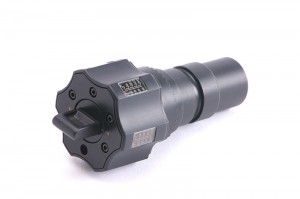When time, flexibility and precision matter, CNC rapid prototyping delivers.
Computer Numerical Control, or CNC, is a rapid prototyping process that differs from more conventional methods. Instead of building layers to make prototypes the way other rapid prototyping processes do, CNC rapid prototyping cuts away from solid blocks of materials ranging from the soft (foam and plastic) to the most galvanized (hardened steel), providing an array of advantages:
Speed
CNC rapid prototyping uses software operated by highly skilled programmers. The software ensures that every slope, angle and cut is done with pin-point accuracy, and the programmer has the ability to change cutting tools to ensure that the right tools are used at the right time to get the perfect shape.
The result is prototypes that hit their marks the first time, reducing the need to modify designs, refine plans and re-do prototypes time and time again.
Flexibility
Of all the advantages of CNC rapid prototyping, perhaps none is more important than the flexibility offered by the process.
Dimensions and orientation matter when it comes to cutting tools, and CNC rapid prototyping offers the flexibility to work on components both large and small. Its flexibility is why it is in a variety of factories and workplaces around the world with three-, four- and five-axis centers. Not every rapid prototype process offers the opportunity to work with several axis centers, which provide more opportunities for more precise cutting.
In addition, CNC rapid prototyping can be operated remotely, reducing the need to have on-site staff available. This means you can choose the right programmer for each project.
Precision
There’s an old adage that says, “Measure twice, cut once.” CNC rapid prototyping is the equivalent of doing just this.
Because it doesn’t rely on a 2D profile like other processes, it cuts and designs with more precision, delivering cutting paths as close as 0.1 mm, to be exact. Other types of rapid prototyping rely on horizontal layers to get to 0.25 mm, which is still impressive but nowhere near as precise as CNC.
For more information about CNC rapid prototyping, contact Product Development Solutions today.

